By Catherine Giles
Welcome to the Field Guide to Dry Specimen Storage for the Section of Invertebrate Zoology (IZ)! Contained in this guide is a detailed listing of all storage containers used by IZ to store insects dry (i.e., those not placed into alcohol) for future study. This easy-to-use guide will specifically cover insect drawer storage, drawer identification, and their location within IZ. Using this guide will allow the reader to identify seven different storage containers we have utilized historically in IZ from the time the museum was founded. These drawers can be identified using their dimensions, coloration, and knob style.
Don’t Drop Your Drawers: A History of Drawer Usage In Invertebrate Zoology
There are many factors that limit where and how we store our insect drawers, but they are primarily dictated by physical space allocations, mainly because we have roughly 30,000 drawers to contend with. Our specimen storage containers range in size from a few square inches to roughly three square feet, and they all require specialized cabinetry for long-term protective storage. This cabinetry is currently divided among four large rooms. The IZ staff have done our best to incorporate technological advances to help with our ever-increasing collection, all while simultaneously maintaining the historical integrity of our museum workspace. We have worked hard to provide our nearly 14.5 million specimens with safe, secure storage.
In the early 1980s, IZ received an NSF grant to construct a compactor in the Ulke Room. In the early 1990s, we received yet another NSF grant to install another compactor in the Avinoff Room. This enormous, movable, compact housing for storing our drawers freed up large volumes of space for us to acquire more drawers (and thus more bugs!). One range contains eight columns of 25 drawers, and can be rolled backwards or forwards to access either side of each range. A stationary range sits single-sided in the middle of each compactor, dividing it roughly in half, so that someone in the back of the compactor can work simultaneously with someone in the front. These compactors were built to store USNM drawers and Schmitt boxes.
In the mid-2000s, IZ was awarded a grant to retrofit some antique wooden cabinetry in the Holland room. We retrofitted each wooden cabinet with steel inserts, making the entire room available for USNM and similarly-styled drawers. Previously, the Holland Room had quirky cabinets, fitted with slats of wood that only permitted Old Holland drawers to fit in at the mercy of humidity and warping. Now, with the new metal inserts, we can fit any combination of Old and New Holland Drawers, USNM, and Schmitt Boxes in the Holland Room.
At one point in IZ’s history, mollusks (snails, slugs, and kin) were included in our section before it split off as the Section of Malacology. In the room formerly occupied by the Section of Mollusks, which now partly houses the Section of Education, you can find antique wooden cabinetry similar to that found in the Holland Room. These cabinets have not been retrofitted with steel inserts and thus can only hold Old Holland and Ortmann drawers. This space is colloquially known as the Sweadner Deck (pictured in part below), after a former Entomology staff member.
Detailed below are each individual storage method and their known habitats around the section. Measurements are given in approximate inches, and photographs are used when applicable. Rarity is used to indicate frequency of specimen storage and frequency of sightings around the section.
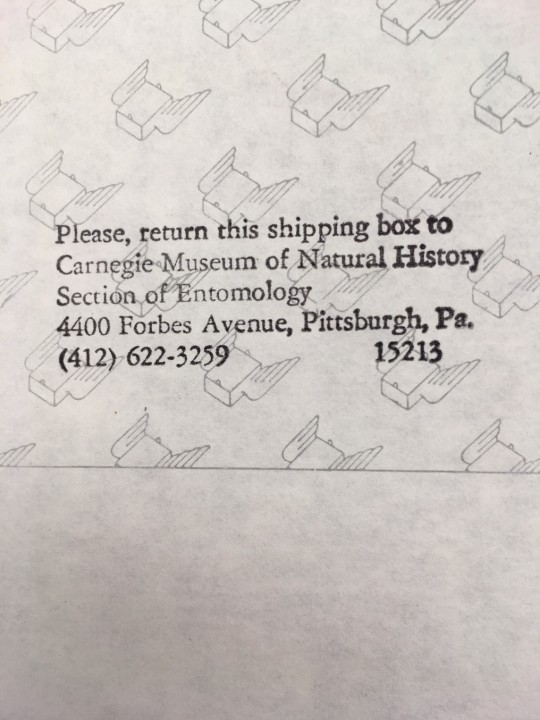
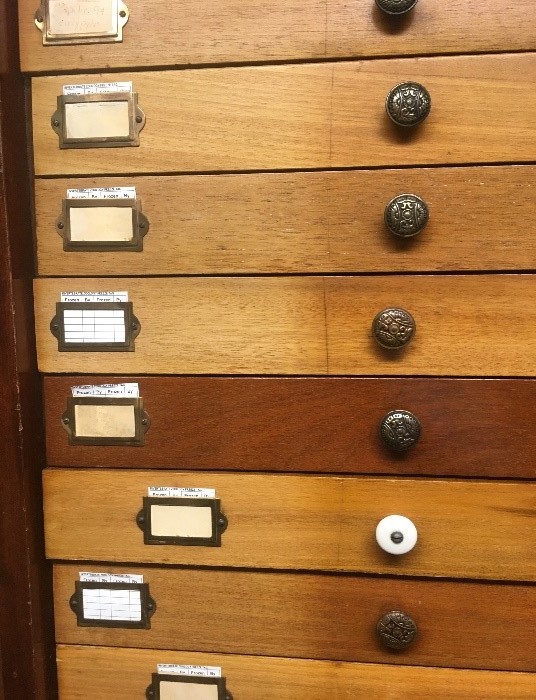
USNM (United States National Museum) Drawer
Rarity: Most Common
Length: 18in, Width: 18in, Depth: 3in
Coloration: Dark Brown to almost Black
Locality and Habitat: Avinoff, Ulke, and sometimes the Holland Room
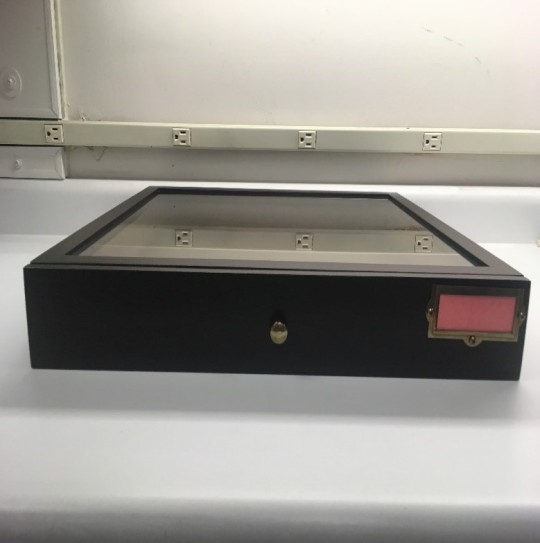
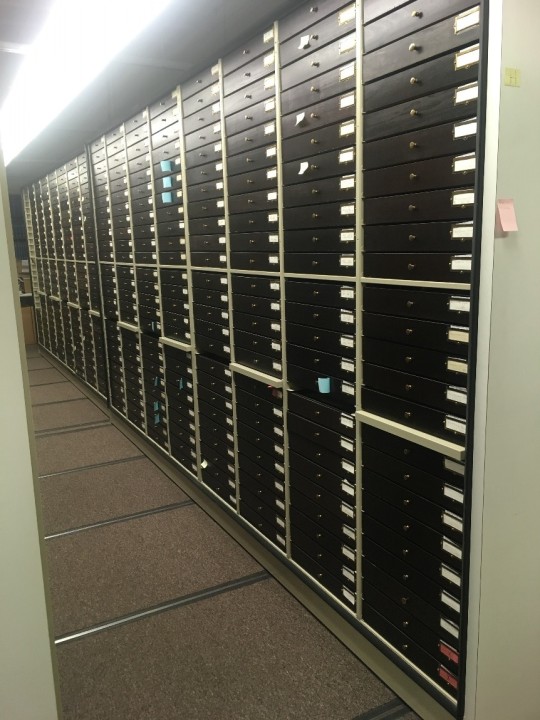
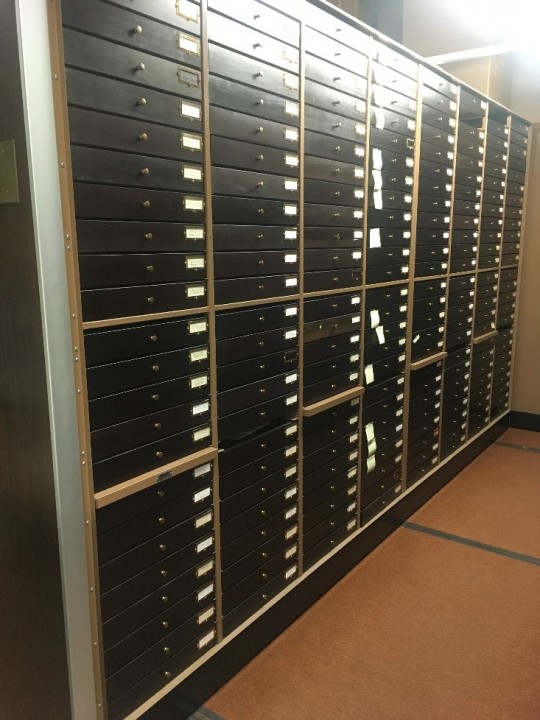
Top photo: An empty USNM Drawer awaits usage; Middle photo: USNM drawers in their Avinoff Compactor Habitat; Bottom photo: USNM Drawers in their Ulke Compactor Habitat; Not Pictured: Holland Room Locality.
New Holland Drawers
Rarity: Common
Length: 23.75in, Width: 18in, Depth: 3in
Coloration: Dark Brown to almost Black
Locality: Holland Room
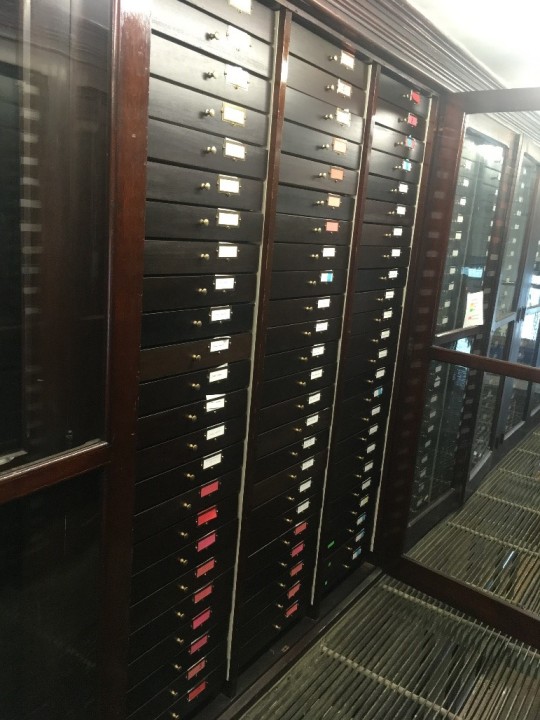
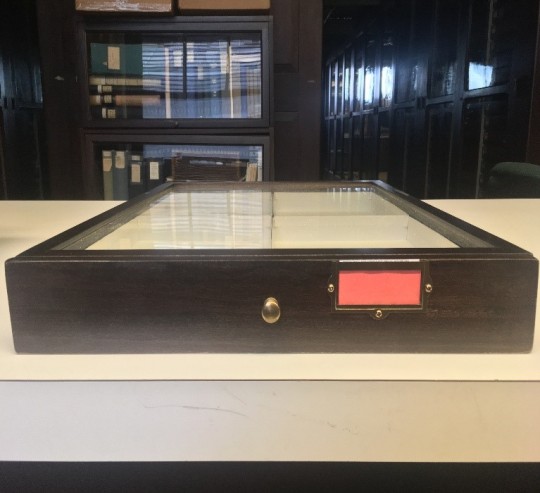
Top photo: New Holland Drawers await final curation in their cabinetry in the Holland Room; Top photo: At about six inches longer than a USNM drawer, the New Holland Drawer’s lengthier frame allows it to be seated only in the cabinetry of the Holland Room.
Old Holland Drawers
Rarity: Common
Length: 23in, Width: 18.15in, Depth: 2.25in
Coloration: Variable light tan, with 3 different style knobs and a pinning bottom
Locality: Holland Room, Sweadner Deck
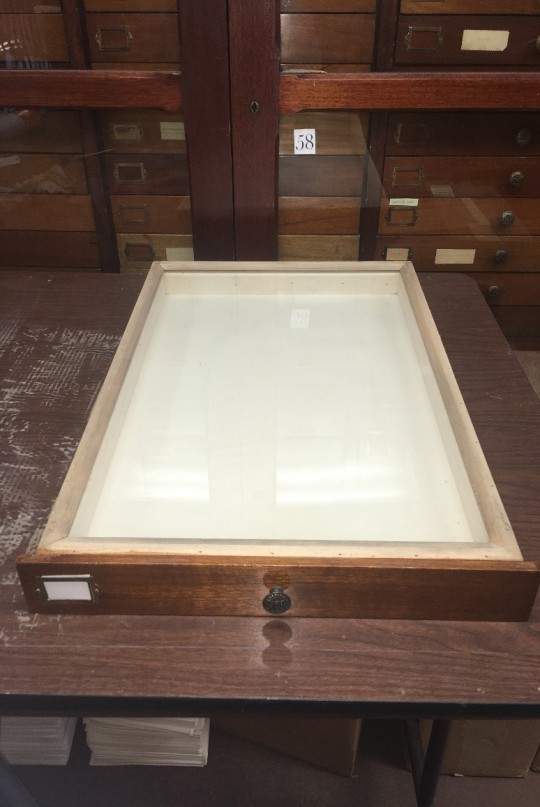
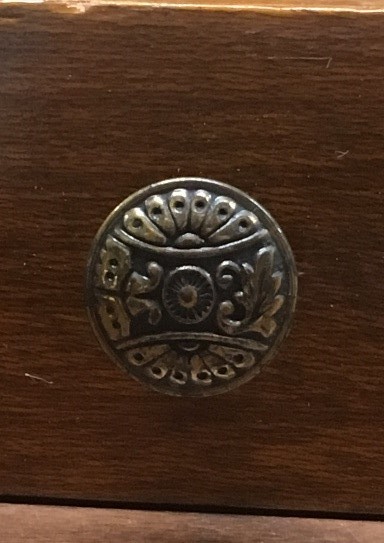
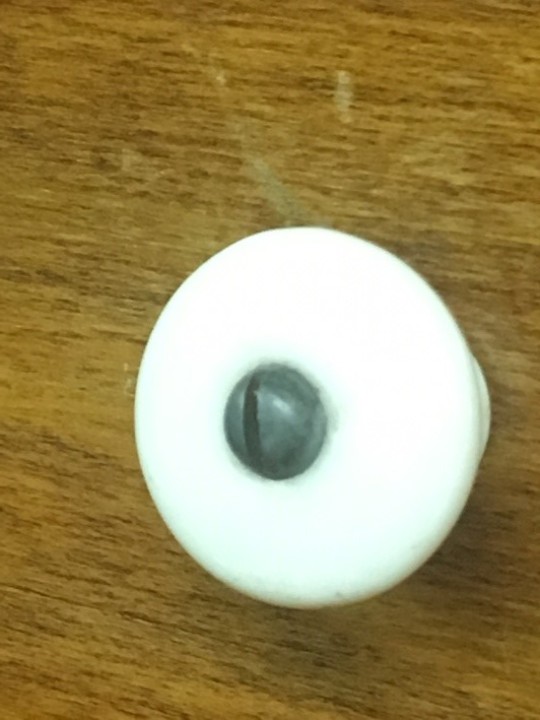
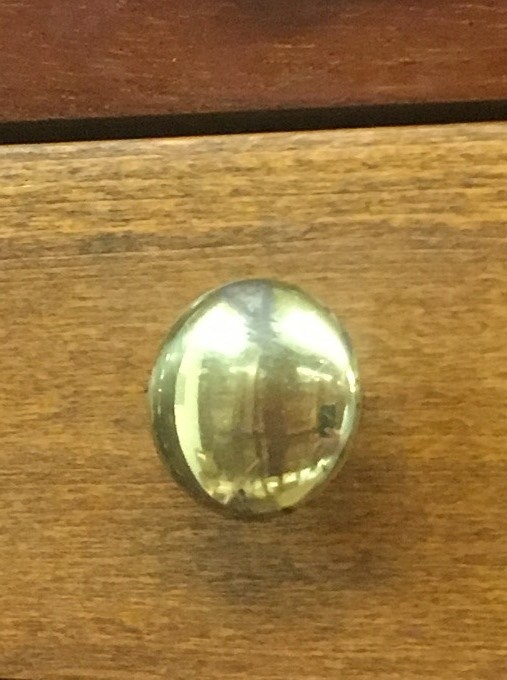
Pictured from top to bottom: An empty Old Holland Drawer, characterized by the wooden side slats and either a cork or foam pinning bottom, sits in the Sweadner Deck, one of only two places it can be housed. Ornate knobs like the one pictured in the middle were used up until World War II, when there was a strict recall on metal to be used in the war efforts. Knobs were then switched to the porcelain style, pictured at the far right. Sometime after the conclusion of World War II, knobs could once again be constructed of metal, this time smooth, as depicted at right.
Rarity: Extirpated
Length: 24.5in, Width: 18+in, Depth: 2.25in or 4in
Coloration: Variable Tan, with no pinning bottom
Locality: Stragglers may be found on the Sweadner Deck, but this style of drawer is no longer used
[FJ1]Note that the Ortmann drawers were not used by IZ, but were the drawers used by Malacology. We have used them more recently for wasp nests and papered materials.
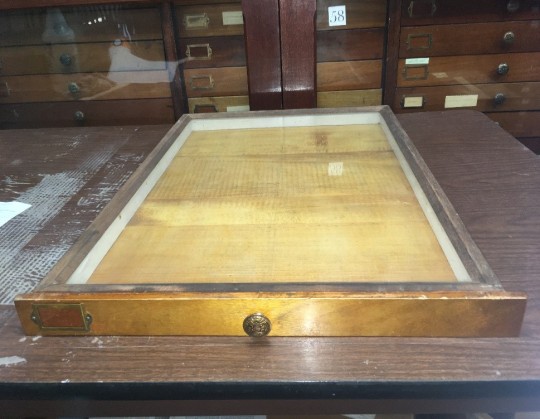
A shallow Ortmann Drawer, characterized by a distinct lack of a pinning bottom and an additional half an inch or more in length, when compared to the nearly identical Old Holland Drawers.
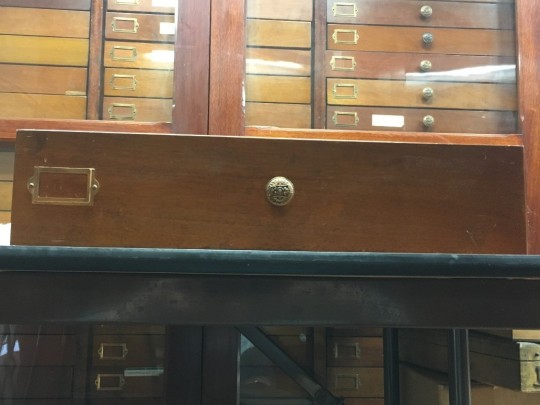
Originally used exclusively in Malacology, Ortmann drawers have been repurposed to house some of our larger items, such as wasps nests and papered materials. A Deep Ortmann Drawer is pictured at right.
Cornell Drawers
Rarity: Uncommon
Length: 16.5in, Width: 19in, Depth: 3in
Coloration: Tan/yellow
Locality: Migratory (basement)
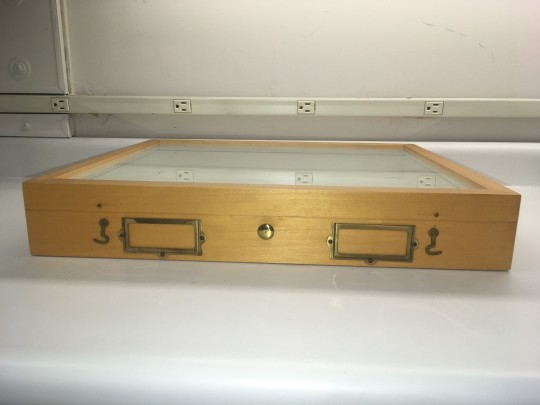
Cornell Drawers like the one pictured above are too long to fit into our standard cabinetry, but they are frequently used elsewhere in the entomological world. They are uncommonly used throughout our section but can be seen from time to time, especially in our basement storage unit. We often receive many Cornell drawers via donation and interaction with collections and collectors. They are generally too wide, much like the Mineral drawers, to fit into our storage units.
Schmitt Boxes
Rarity: Uncommon
Length: 9in, Width: 13in, Depth: 2.5in
Coloration: Variable light tan
Locality: Holland Room
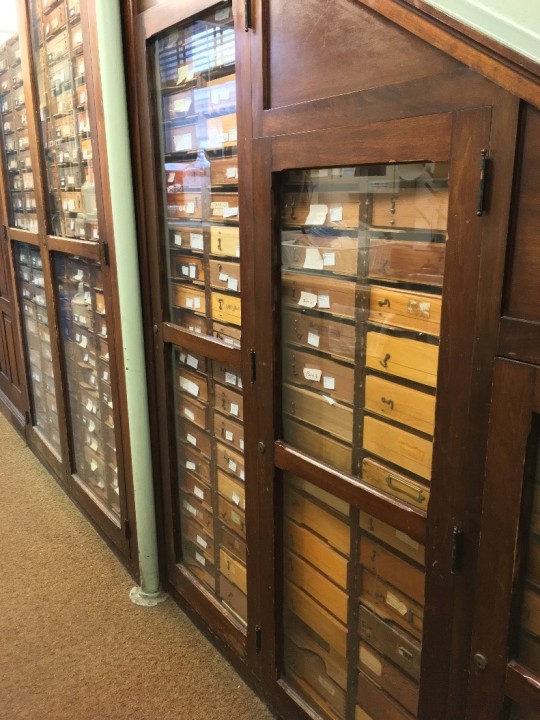
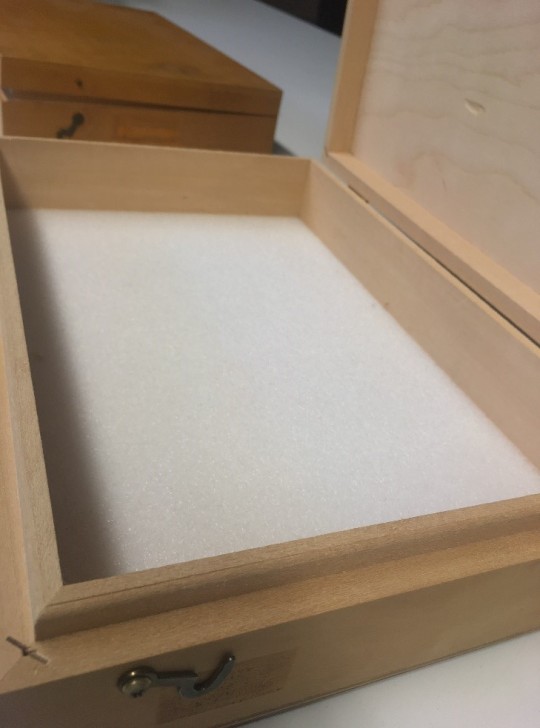
Schmitt Boxes were created by Jerome Schmitt. They are incredibly useful when conducting field work. In our section, they hold mostly loan returns and papered materials, and are located in the Holland Room, in intricate cabinets under the stairs. The Schmitt box pictured at the right has a foam pinning bottom, but many also contain cork.
Shippers
Rarity: Rare
Length: 9in, Width: 13in, Depth: 2.5in
Coloration: White or Brown
Locality: Preparatory Lab
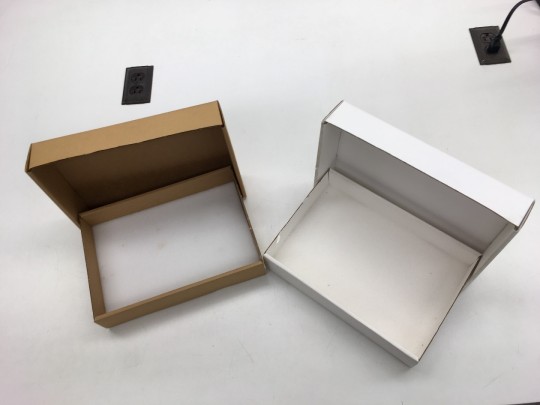
Our final storage method is our shipping containers. We typically do not store specimens here in the long-term, but while we are preparing to send a loan or have received one, specimens may be found here. Pictured above: Shippers, of similar dimensions to Schmitt Boxes. Pictured below: Shippers of a variety of sizes and shapes, in their home in the Preparatory Lab.
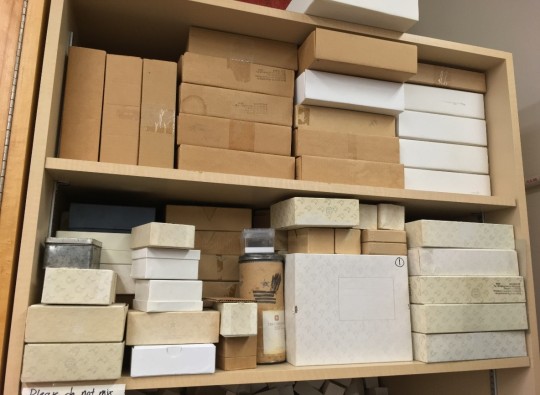
Catherine Giles is the Curatorial Assistant of Invertebrate Zoology at the Carnegie Museum of Natural History. Museum employees are encouraged to blog about their unique experiences working at the museum.
